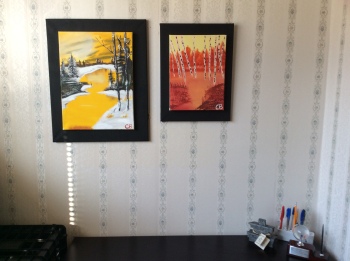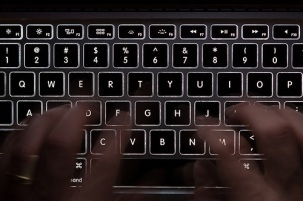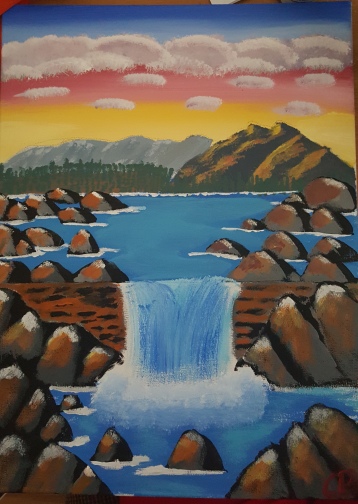Prior to the course, I have attempted to gain my PLN by sharing education articles, and tweeting about education. I had previously used my blog for posts in other classes as well as sharing my experiences in internship and pre-internship. However, I always felt that blogging in this scenario was a chore. Now, I use it as a procrastination tool.
Over the last four months, I have been able to grow my PLN. Through Twitter, my blog, and Google+. I was able to have great conversations with my pre-service teacher colleagues as well as teachers in the field all over the world. As you will see below many examples of the highlights of my PLN.
Twitter
The most enjoyable, and most prevalent way of me expanding my PLN includes Twitter Chats. Some of the Twitter chats that I was involved in include our very own #ecmpchat, #saskedchat, #starschat, #edchat, #bcedchat, #ntchat, #caedchat, #teacheredchat, #msmathchat, and #edtechbridge. Through these Twitter chats, I was able to gain new resources that I am able to explore and hopefully integrate into the classroom. Through participating in Twitter chats I was able to gain followers and be a part of other teachers and pre-service teachers PLN. Below are a few of my highlights of developing my PLN through Twitter chats.
If you are interested in participating in Twitter chats, this site provides numerous opportunities to grow your PLN.
Even through simple retweets, and favouriting posts, or asking for advice on Twitter, provides a simple way to make connections and grow a PLN.
Blogging
One of the highlights of my blog is the following post on Support for #LGBTQ and #DigitalIdentity. This post was one of my more popular posts. The two comments by both Gillian and Cam both provided me with additional reflection, which contributed to my further learning of the link between religion and #LGBTQ and online social activism.
Through commenting on my colleagues blogs I was able to question and share my own opinions on their posts. I also had the experience to comment on blogs from people outside our class. I was able to send many of my colleagues resources and contribute to their learning. One of the comments that come to mind is on Marissa Quigley’s post “MineCraft, I get it!!“. I was able to make a further connection and provide a resource for further exploration.
Additional posts regarding my PLN include:
“Is There Such a Thing as an Honest Digital Identity?” by Ashley Arndt. On the connection between public and private digital identities.

As well as: “Slacktivism: Good or Bad?” by Nathan Bromm
I believe that it is important that we branch outside of our ECMP class for establishing my PLN. For example, I noticed that Nathan Bromm, a teacher who is taking ECI831, posted on what is social activism, and whether or not it is just a cop out for so-called activists. His post discussed some crucial understanding discussing Facebook and their “flag filters”. 
Google+
Through Google+ I was able to be a part of our Google community. Through the Google community, I was answering questions about the course as well as share my personal learning journey to paint. This allowed me to get classroom feedback on my painting journey. However, I was not as prominent on Google+ as I was on Twitter. Despite my lack of input into the ECMP community, I was able to connect through other communities on Google+. I personally felt as many of the articles that I wanted to share I would share using the #ECMP hashtag because I have a much larger following on Twitter as compared to Google+.

EdcampYQR – April 9th, 2016
Edcamp was an opportunity to expand my PLN and meet some of the members of my PLN. Through this experience, I was able to grow in my knowledge of improv. in the classroom, Project based learning, Google Apps for Education, and Genius Hour are all tools that I have gained knowledge about from teachers in the field. Edcamp allowed me to meet with other like-minded educators, and overall was a great experience to network and expand on my PLN. For a complete experience of EdcampYQR check out my recent blog post! What You Missed at #EdcampYQR.
In conclusion, I believe the growth in my PLN has been substantial. Learning how to participate in Twitter chats, and how to make a good blog post are techniques that I will continue to use to develop into my teaching career.
For a larger picture growth of my PLN, the following Google Doc will allow you to see key connections made over the course.




 background of painting.
background of painting. Clive5Art
Clive5Art
 very disappointed and frustrated with how it turned out.
very disappointed and frustrated with how it turned out.


 really enjoy the paintings with water, but I wanted to make this a diverse experience. However, my learning through this painting was using iMovie and my GoPro. I haven’t had the opportunity to use iMovie so it was a great learning experience to learn how to use video software. Through iMovie, I was able to speed up my painting. After uploading the 30-minute 1080p video to YouTube. I attempted to add music to it using the free music youtube provides. However, I struggled to attach multiple songs to the video clip. This is something that I will continue to work with in my next art piece.
really enjoy the paintings with water, but I wanted to make this a diverse experience. However, my learning through this painting was using iMovie and my GoPro. I haven’t had the opportunity to use iMovie so it was a great learning experience to learn how to use video software. Through iMovie, I was able to speed up my painting. After uploading the 30-minute 1080p video to YouTube. I attempted to add music to it using the free music youtube provides. However, I struggled to attach multiple songs to the video clip. This is something that I will continue to work with in my next art piece. Photo Credit:
Photo Credit:  What message is this sending to young girls? What message is this sending to young boys? Well, it’s not a very positive one.
What message is this sending to young girls? What message is this sending to young boys? Well, it’s not a very positive one.

 I completed my first painting with limited use of tutorials. On the painting, I just did I used many different types of techniques that I had used in other paintings. I decided that I would give it a try and see what I would come up with. Again, I was following Allision Prior’s art techniques for the painting of the sky, and the rocks, and water. But I decided to put some mountains in the distance. The mountains is what I needed some assistance with. I followed a
I completed my first painting with limited use of tutorials. On the painting, I just did I used many different types of techniques that I had used in other paintings. I decided that I would give it a try and see what I would come up with. Again, I was following Allision Prior’s art techniques for the painting of the sky, and the rocks, and water. But I decided to put some mountains in the distance. The mountains is what I needed some assistance with. I followed a 
